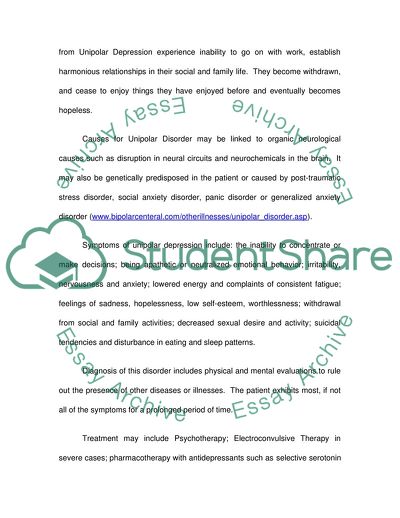Cite this document
(Cyclothymic, Manic-Depressive and Bipolar Disorders - Similarities and Literature review, n.d.)
Cyclothymic, Manic-Depressive and Bipolar Disorders - Similarities and Literature review. Retrieved from https://studentshare.org/psychology/1723165-provide-an-overviewof-each-of-the-following-and-how-they-can-be-supported-in-a-counselling-and-multi-disciplinary-frameworkunipolar-depressiondysthymic-disordercyclothymic-disorder
Cyclothymic, Manic-Depressive and Bipolar Disorders - Similarities and Literature review. Retrieved from https://studentshare.org/psychology/1723165-provide-an-overviewof-each-of-the-following-and-how-they-can-be-supported-in-a-counselling-and-multi-disciplinary-frameworkunipolar-depressiondysthymic-disordercyclothymic-disorder
(Cyclothymic, Manic-Depressive and Bipolar Disorders - Similarities and Literature Review)
Cyclothymic, Manic-Depressive and Bipolar Disorders - Similarities and Literature Review. https://studentshare.org/psychology/1723165-provide-an-overviewof-each-of-the-following-and-how-they-can-be-supported-in-a-counselling-and-multi-disciplinary-frameworkunipolar-depressiondysthymic-disordercyclothymic-disorder.
Cyclothymic, Manic-Depressive and Bipolar Disorders - Similarities and Literature Review. https://studentshare.org/psychology/1723165-provide-an-overviewof-each-of-the-following-and-how-they-can-be-supported-in-a-counselling-and-multi-disciplinary-frameworkunipolar-depressiondysthymic-disordercyclothymic-disorder.
“Cyclothymic, Manic-Depressive and Bipolar Disorders - Similarities and Literature Review”. https://studentshare.org/psychology/1723165-provide-an-overviewof-each-of-the-following-and-how-they-can-be-supported-in-a-counselling-and-multi-disciplinary-frameworkunipolar-depressiondysthymic-disordercyclothymic-disorder.


